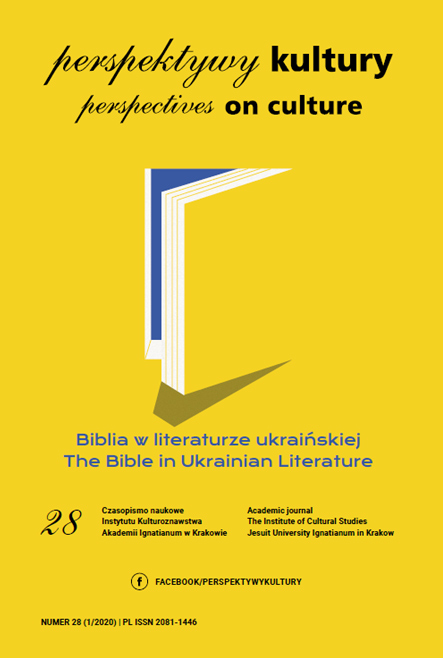Wybrane aspekty rytuałów okołostartowych piłkarek
Abstrakt
Rytuały to zagadnienie interdyscyplinarne. To zjawisko, które może nieść wiele znaczeń i mieć różną wartość dla osoby, która je wykonuje albo wierzy w związane z nimi przesądy. Rytuały są tajemnicze i intrygujące, a przez to tym ciekawsze dla próby poznania naukowego.
Obserwacja środowiska sportowego pozwala stwierdzić, że rytualizacja dotyczy nie tylko samej ceremonii, ale też funkcjonowania poszczególnych zawodników – zwłaszcza w okresie okołostartowym. To skłoniło do podjęcia badań, a także dyskusji nad miejscem/rolą rytuałów w przygotowaniu mentalnym i fizycznym sportowców.
Do udziału w badaniach zaproszono 62 piłkarki nożne biorące udział w rozgrywkach polskich lig. Wypełniły one kwestionariusz ankiety RwS – „Rytuały w Sporcie”. Celem badań było poznanie okołostartowych zachowań rytualnych zawodniczek i ich drużyn. Pytania dotyczyły m.in. również subiektywnie odczuwanego związku rytuałów ze spodziewanym wynikiem sportowym. Analizy wyników badań własnych potwierdziły istnienie rytualizacji okołostartowego funkcjonowania piłkarek. Zakres, różnorodność i wielość znaczeń rytuałów realizowanych przez poszczególne zawodniczki/drużyny podkreśla znaczący wymiar tego interdyscyplinarnego fenomenu.
Bibliografia
Bergier, J. (2006). Piłka nożna kobiet [Women’s football]. Biała Podlaska: PWSZ.
Brevers, D., Dan, D., & Noel, X. (2011). Sport superstition: Mediation of psychological tension on non-professional sportsmen’s superstitious rituals. Journal of Sport Behavior, 34, 3–24.
Burke, K.L. (2006). An exploratory investigation of superstition, personal control, optimism and pessimism in NCAA Division I intercollegiate student-athletes. Athletic Insight: The Online Journal of Sport Psychology, 8(2), 5–9.
Foster, D.J., Weigand, D.A., & Baines, D. (2006). The effect of removing superstitious behavior and introducing a pre-performance routine on basketball free-throw performance. Journal of Applied Sport Psychology, 18(2), 167–171.
Guillet, E., Sarrazin, P., Fontayne, P., & Brustad, R.J. (2006). Understanding female sport attrition in a stereotypical male sport within the framework of Eccles’s Expectancy—Value Model. Psychology of Women, 30, 358–368.
Jeanes, R. (2011). I’m into high heels and make up but I still love football: Exploring gender identity and football participation with preadolescent girls. Soccer and Society, 12(3), 402–420.
Labbate, M. (2011). Attention, sit, mediate, bow, ready position: Ritualized Dojo pattern or character training? Journal of Asian Martial Arts, 20(1), 81–93.
Lipoński, W. (2004). Rochwist i palant. Studium etnologiczne dawnych sportów i gier ruchowych na tle tradycji europejskiej [Rochwist and palant: Ethnological study of ancient sports and movement games against the background of European tradition]. Poznań: AWF.
Maisonneuve, J. (1995). Rytuały dawne i współczesne [Old and modern rituals]. Gdańsk: GWP.
Maranise, A.M.J. (2013). Superstition and religious ritual: An examination of their effects and utilization in sport. The Sport Psychologist, 27, 83–91.
Mazurkiewicz, M. (2011a). Istota rytuału [The meaning of ritual]. Respectus Philologicus, 25, 40–51.
Mazurkiewicz, M. (2011b). Some observation about ritual in sport. Studies in Physical Culture and Tourism, 4, 317–327.
McGinnis, L.P., Gentry, J.W., & McQuillan, J. (2009). Ritual-based behavior that reinforces hegemonic masculinity in golf: Variations in woman golfers’ responses. Leisure Sciences, 31, 19–36.
Rudski, J.M., & Edwards A. (2007). Malinowski goes to college: Factors influencing students’ use of ritual and superstition. The Journal of General Psychology, 134(4), 389–403.
Rutkowska, K., & Rut, A. (2016). Zachowania rytualne piłkarek a ich poczucie kontroli [Ritualized practices of female football players and their sense of control]. In M. Adamczyk & I. Shaposhnykova (Eds.), Current issues and problems of social sciences: Actual questions and problems of development of social sciences. Proceedings of the Conference, June 28–30, 2016. Kherson, Kielce, Helvetica, 145–154.
Schippers, M.C, & Van Lange, P.A. (2006). The psychological benefits of superstitious rituals in top sport: A study among top sportspersons. Journal of Applied Social Psychology, 36(10), 2532–2553.
Stirling, L., & Schulz, J. (2011). Women’s football: Still in the hands of men. Sport Management International Journal, 7(2), 53–78.
Van Raalte, J.L., Brewer, B.W., Nemeroff, C.J., & Linder, D.E. (1991). Chance orientation and superstitious behavior on the putting green. Journal of Sport Behavior, 14, 41–50.
Womack, M. (1992). Green cars, black cats and lady luck. In S.J. Hoffman (ed.), Sport and Religion. Human Kinetics Publishers: U.K., 203–212.
Copyright (c) 2020 Akademia Ignatianum w Krakowie

Utwór dostępny jest na licencji Creative Commons Uznanie autorstwa – Bez utworów zależnych 4.0 Międzynarodowe.
Autor, zgłaszając swój artykuł, wyraża zgodę na korzystanie przez Wydawnictwo Uniwersystet Ignatianum z utworu na następujących polach eksploatacji:
- utrwalania utworu w formie papierowej, a także na nośniku cyfrowym lub magnetycznym;
- zwielokrotnienia utworu dowolną techniką, bez ograniczenia ilości wydań i liczby egzemplarzy;
- rozpowszechniania utworu i jego zwielokrotnionych egzemplarzy na jakimkolwiek nośniku, w tym wprowadzenia do obrotu, sprzedaży, użyczenia, najmu;
- wprowadzenia utworu do pamięci komputera;
- rozpowszechniania utworu w sieciach informatycznych, w tym w sieci Internet;
- publicznego wykonania, wystawienia, wyświetlenia, odtworzenia oraz nadawania i reemitowania, a także publicznego udostępniania utworu w taki sposób, aby każdy mógł mieć do niego dostęp w miejscu i czasie przez siebie wybranym.
Wydawca zobowiązuje się szanować osobiste prawa autorskie do utworu.





